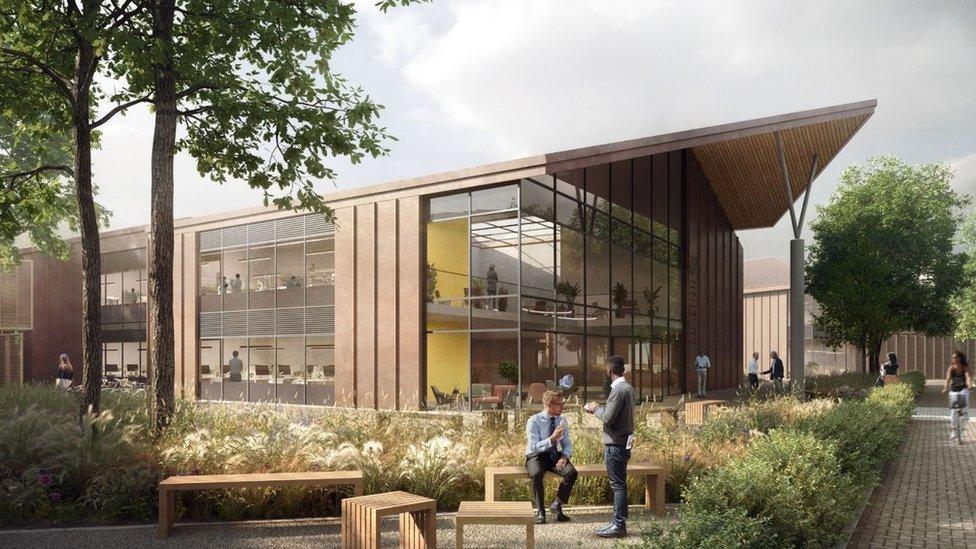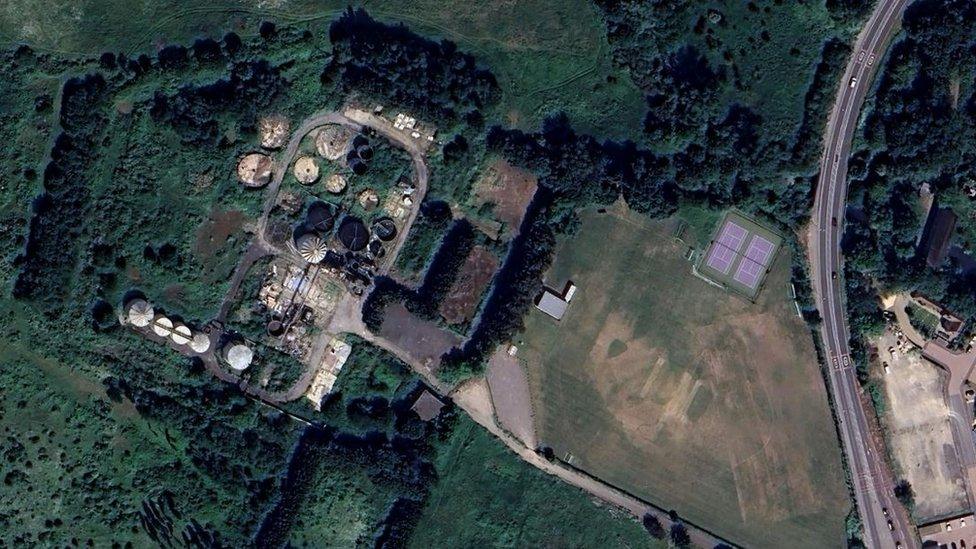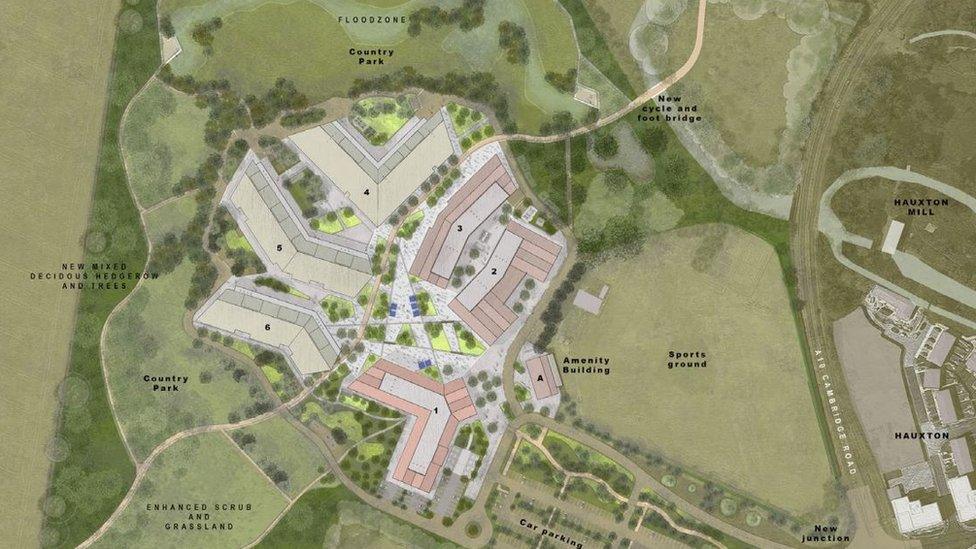New science campus approved for abandoned Hauxton sewage works
- Published

The new science centre could bring 1,000 jobs to the area, the developer said
An abandoned sewage works described as a "post-apocalyptic wasteland" is to be redeveloped into a life science campus.
Outline plans for six offices and laboratory buildings on the former wastewater treatment site in Hauxton, Cambridgeshire, have been approved.
Developer Bridgemere Land Ltd said it would clean up the highly contaminated land and provide about 1,000 jobs.
South Cambridgeshire District Council voted in favour of the plans at the Cambridge Road site on Wednesday.
The former sewage works closed down in 2005 and some of the facility's old structures, which included silos and tanks, were left behind and have deteriorated over the years.

Old silos and tanks at the site will need to be removed
Under the plans to redevelop the old sewage works, the remaining structures would be demolished and the contaminated land cleaned up.
The proposals included a new gym, cafe, and changing facilities which would be open to the public to use, as well as 330 car parking spaces and 306 cycle spaces.
The developer said it would contribute funding towards a cycleway through the site and a country park.

A plan of parts of the proposed new centre show a country park and new cycle routes
Previous outline plans to build 32 homes on the site were approved by the district council in 2016 and a more detailed application for this development has now also been submitted to the authority.
The alternative plans for the science hub were supported by Hauxton Parish Council which said the new amenity building would "add a lot of value to the local community".
However, concerns were raised by the Environment Agency that it would contribute to increased water abstraction and risked the further deterioration to water bodies in the Greater Cambridge area.
Rob Sadler, speaking on behalf of the developer at a council planning meeting on Wednesday, external, said they had "really worked hard" to reduce the amount of water that would be used by the proposed science campus, and said it would use 22% less water than the alternative development of 32 homes.
He said the Environment Agency had not objected to the latest plans for the residential development, which would use more water.
Dr Lisa Redrup, the Liberal Democrat councillor for nearby Harston, said the water situation was "not ideal", but said she accepted the explanation that the science park would be better than the homes in terms of water usage.
Councillor Bill Hadley, Liberal Democrat cabinet member for communities, said "any development is going to be an improvement" from the existing contaminated site, while fellow Lib Dem councillor Peter Sandford pointed out that when the committee had visited the former sewage works he thought it looked like a "post-apocalyptic wasteland".
When a decision on the application was put to a vote, eight councillors voted in support of approving the plans, with one councillor voting against, and one councillor abstaining.
More detailed plans for the science park would need to be submitted to the Liberal Democrat-led district council for approval before it can be built.

Follow East of England news on Facebook, external, Instagram, external and X, external. Got a story? Email eastofenglandnews@bbc.co.uk, external or WhatsApp 0800 169 1830
Related topics
- Published10 April 2024

- Published17 November 2011